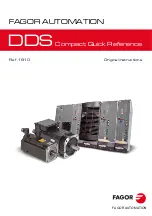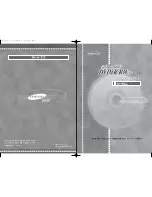
NOTICE
Specific heat of air (cp) and density of air (ρ) are not
constants, but depend on temperature, humidity, and
atmospheric pressure. Therefore, they depend on the
altitude above sea level.
shows typical values of the factor f, calculated for
different altitudes.
Altitude
Specific heat of air
cp
Density of air
ρ
Factor
f
[m]
[kJ/kgK]
[kg/m
3
]
[m
3
⋅
K/Wh]
0
0.9480
1.225
3.1
500
0.9348
1.167
3.3
1000
0.9250
1.112
3.5
1500
0.8954
1.058
3.8
2000
0.8728
1.006
4.1
2500
0.8551
0.9568
4.4
3000
0.8302
0.9091
4.8
3500
0.8065
0.8633
5.2
Table 3.1 Factor f, Calculated for Different Altitudes
Example
What is the airflow required to cool 2 frequency converters
(heat losses 295 W and 1430 W) running simultaneously,
mounted in an enclosure with an ambient temperature
peak of 37
°
C?
•
The sum of the heat losses of both frequency
converters is 1725 W.
•
Multiplying 1725 W by 3.3 m
3
x K/Wh gives 5693
m x K/h.
•
Subtracting 37
°
C from 45
°
C gives 8
°
C (=8 K).
•
Dividing 5693 m x K/h by 8 K gives: 711.6 m
3
h.
If the airflow is required in CFM, use the conversion 1 m
3
/h
= 0.589 CFM.
For the example above, 711.6 m
3
/h = 418.85 CFM.
3.1.4 Motor-generated Overvoltage
The DC voltage in the DC link (DC bus) increases when the
motor acts as a generator. This situation can occur in 2
ways:
•
The load drives the motor when the frequency
converter is operated at a constant output
frequency. This is referred to as an overhauling
load.
•
During deceleration, if the inertia of the load is
high and the deceleration time of the frequency
converter is set to a short value.
The frequency converter cannot regenerate energy back to
the input. Therefore, it limits the energy accepted from the
motor when set to enable autoramping. If the overvoltage
occurs during deceleration, the frequency converter
attempts to do this by automatically lengthening the
ramp-down time. If this is unsuccessful, or if the load
drives the motor when operating at a constant frequency,
the frequency converter shuts down and shows a fault
when reaching a critical DC bus voltage level.
3.1.5 Acoustic Noise
Acoustic noise from the frequency converter comes from 3
sources:
•
DC-link (intermediate circuit) coils
•
RFI filter choke
•
Internal fans
See
for acoustic noise ratings.
3.1.6 Vibration and Shock
The frequency converter is tested according to a procedure
based on the IEC 68-2-6/34/35 and 36. These tests subject
the unit to 0.7 g forces, over the range of 18–1000 Hz
randomly, in 3 directions, for 2 hours. All Danfoss
frequency converters comply with requirements that
correspond to these conditions when the unit is wall- or
floor-mounted, as well as when mounted within panels, or
bolted to walls or floors.
3.1.7 Aggressive Atmospheres
3.1.7.1 Gases
Aggressive gases, such as hydrogen sulphide, chlorine, or
ammonia can damage frequency converter electrical and
mechanical components. Contamination of the cooling air
can also cause the gradual decomposition of PCB tracks
and door seals. Aggressive contaminants are often present
in sewage treatment plants or swimming pools. A clear
sign of an aggressive atmosphere is corroded copper.
In aggressive atmospheres, restricted IP enclosures are
recommended along with conformal-coated circuit boards.
See
for conformal-coating values.
NOTICE
The frequency converter comes standard with class 3C2
coating of circuit boards. On request, class 3C3 coating is
available.
System Integration
Design Guide
MG16G202
Danfoss A/S © 08/2015 All rights reserved.
37
3
3
















































